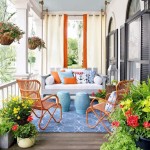What Is The Decorative Trim On Walls Called?
Decorative trim, often referred to as molding, is an essential element in interior design, adding visual interest, architectural detail, and a touch of elegance to walls. From the classic crown molding that adorns the top of a room to the subtle chair rail that divides the lower and upper portions of a wall, decorative trim comes in a wide array of styles, materials, and applications, each contributing to the overall aesthetic of a space.
Types of Decorative Trim
The world of decorative trim is vast and diverse, encompassing a wide range of styles and functions. Here are some of the most common types of decorative trim found in homes and commercial spaces:
1. Crown Molding
Crown molding is a decorative trim that is typically installed along the junction of the wall and ceiling, creating a visually appealing transition between the two surfaces. Crown molding can range from simple and understated to ornate and elaborate, depending on the desired aesthetic. It is often made of wood, but other materials like polyurethane and plaster are also common.
2. Baseboard Molding
Baseboard molding is installed along the bottom of the wall, covering the gap between the wall and the floor. It serves both a decorative and functional purpose, protecting walls from scuffs and scratches while adding visual interest. Baseboard molding can be simple, consisting of a single flat profile, or more elaborate, with intricate designs and multiple layers.
3. Chair Rail Molding
Chair rail molding is placed horizontally on the wall, typically at a height of approximately 36 inches, creating a visual divide between the lower and upper portions of the wall. This type of molding, often made of wood, protects walls from chair backs and other furniture, while also adding a touch of elegance and sophistication.
4. Picture Rail Molding
Picture rail molding is a decorative trim placed along the upper portion of a wall, specifically designed to hold pictures or other wall decorations. It is typically installed at a height that allows for easy hanging, and it can be made of wood, metal, or plaster. Picture rail molding eliminates the need for nails or hooks and offers a clean and organized way to display artwork.
5. Wainscoting
Wainscoting is a type of decorative trim that covers the lower portion of a wall, typically extending from the floor to a height of approximately 3 feet. It can be made of various materials, including wood, plaster, and tile, and often features panels, moldings, and other decorative elements. Wainscoting adds visual interest and architectural detail to a space, while also providing durability and protection to the lower portion of the wall.
Materials Used for Decorative Trim
Decorative trim can be made from a variety of materials, each offering unique advantages and aesthetics. Some of the most common materials include:
1. Wood
Wood is a classic and timeless material for decorative trim. It is available in a wide variety of species, each with its own unique grain patterns, colors, and characteristics. Wood is durable, versatile, and can be stained or painted to match any decor. Popular wood species used for trim include oak, maple, pine, and cherry.
2. Polyurethane
Polyurethane is a lightweight and durable synthetic material that is often used for molding. It is resistant to moisture and temperature changes, making it suitable for both interior and exterior applications. Polyurethane molding is available in a variety of styles and profiles and is typically painted to match the surrounding walls.
3. Plaster
Plaster is a traditional material that is commonly used for decorative trim in historic homes. It can be molded into intricate designs and is known for its durability and smooth finish. Plaster molding requires skilled craftsmanship and is often used in conjunction with other decorative elements, such as crown molding and baseboard molding.
Tips for Choosing and Installing Decorative Trim
Choosing and installing decorative trim is a process that involves a few key considerations. Here are some tips for ensuring a successful outcome:
1. Style and Design
Select a style of decorative trim that complements the overall aesthetic of the space. Consider the architectural style of the home or building, the existing furniture and finishes, and the desired mood or ambiance. For traditional decor, classic moldings with intricate designs are a good choice, while modern spaces may benefit from minimalistic and linear profiles.
2. Material Selection
The choice of material depends on factors such as budget, desired aesthetics, and functional requirements. Wood offers durability and a classic look, while polyurethane provides affordability and ease of installation. Plaster is a traditional choice for ornate and intricate designs.
3. Installation
For a professional finish, it is recommended to hire a skilled contractor or carpenter for trim installation. However, with proper tools and techniques, homeowners can install decorative trim themselves. Ensure that the surfaces are clean and level, and use construction adhesive and nails for a secure installation.
4. Painting and Staining
Once installed, decorative trim should be painted or stained to match the surrounding walls or create a desired contrast. Choose high-quality paints or stains designed specifically for trim applications. Consider using a paint sprayer for a smooth and even finish.
Decorative trim is more than just a decorative element; it is an essential component of interior design. It adds architectural detail, enhances the visual appeal of a space, and contributes to the overall aesthetic. With a wide range of materials, styles, and applications, decorative trim offers endless possibilities for creating unique and personalized interiors.

Diffe Types Of Wood Wall Treatments

6 Types Of Decorative Molding To Glam Up Walls And Ceilings

Ultimate Guide To The Types Of Mouldings Van Dyke S Rers

How To Install Decorative Wall Panel Molding An Easy Diy Weekend Project Jane At Home

6 Types Of Decorative Molding To Glam Up Walls And Ceilings

Moulding Ideas For Walls Mans Lumber Home

Diy Guide To Decorative Mouldings

6 Types Of Decorative Molding To Glam Up Walls And Ceilings

10 Types Of Wall Moldings To Consider Before Remodeling Your Home

How To Install Picture Frame Molding
Related Posts







